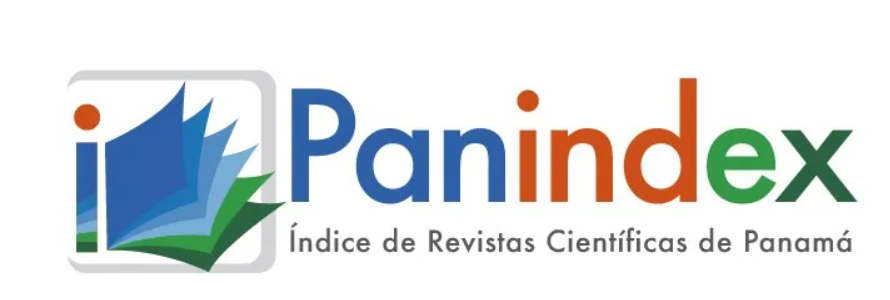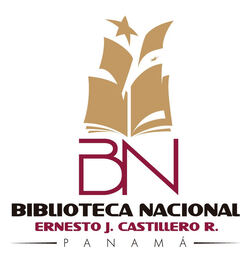The content of the publications and the links suggested in them are the sole responsibility of the authors and not of the Metropolitan University of Education, Science and Technology (UMECIT) or of the journal ORATORES. They are protected by international copyright laws as well as the logos of UMECIT AND ORATORES, hence their reproduction is totally prohibited.
This work is licensed under a Creative Commons Attribution-NonCommercial-NoDerivatives 4.0 International License.
The authors maintain the copyright and transfer the right of the first publication to the journal, with the article registered with Creative Commons Attribution-NonCommercial-NoDerivatives License, which allow others They can download the works published in this magazine and share them with other people, as long as their authorship is recognized, but they cannot be changed in any way nor can they be used commercially.
Authors are recommended to include their work in social networks such as Researchgate and institutional repositories once the article or visible fact has been published on the journal page, without forgetting to include the digital document identifier and the name of the journal.



Abstract
In order to evaluate the relevance of information and communication technologies (ICT) in the colombian middle education, it was taken the research history on the subject, advanced in the departments of Cauca and Tolima, as well as in the municipalities of Soledad Department of Atlántico), Muzo and Chiquinquirá (Department of Boyacá). In the last population, a case study was conducted at the Los Comuneros Educational Institution, through the application of structured interviews and surveys in 16 teachers and 53 students, under the criterion of determining the state in which they are located, of the "Educational innovation in Colombia: good practices for innovation and ICT in education" (2016) and "Technology for the transformation and improvement" of education: experiences of success and expectations for the future ", (2014) evidence the improvement of students in public tests of multiple choice called SABER 11 when ICT is applied. In addition, the documentary review of the studies carried out by the Santillana Foundation and the Colombian Ministry of National Education (MEN), reflected on the sum of elements related to the proposed topic, generating as results and conclusions that a didactic model should be created to from ICT, strengthen teacher training and adapt the infrastructure of educational sites to the technologies in vogue, all in terms of improving the quality of education.
Keywords
References
Bedoya, F., Hernández, L., Rivera, P & Ferro, M., (2016). La Innovación Educativa en Colombia. Bogotá. Comité Editorial: CIEN, Ministerio de Educación Nacional – Universidad Nacional.
Cabero, J. (2000). Nuevas tecnologías aplicadas a la educación. Editorial Síntesis. España.
Castells, M. (1998). La era de la información. Economía, sociedad y cultura. La Sociedad Red. Vol (nº 1). Alianza Editorial.
Castellar, E. (2011). Diagnóstico del uso de las TIC en estudiantes de colegios oficiales del municipio de Soledad (Atlántico). Revista Zona próxima. No. 14. (Pp. 74-89).
Cardenas, A. (2015). Implicaciones de las TIC en la formación profesional del docente en la educación básica y media. Recuperado de: http://recursos.portaleducoas.org/sites/default/files/5107.pdf
Consejo Privado de Competitividad. (2017). Informe Nacional de Competitividad 2016-2017. Recuperado de: https://compite.com.co/informe/informe-nacional-de-competitividad-2016-2017/.
Francesc, P. (2014). Tecnologías para la mejora de la educación: experiencias de éxito y expectativas para el futuro. Fundación Santillana. Recuperado de:https://www.mecd.gob.es/dam/jcr...155b.../docbasico2015semeducsantillana-pdf.pdf.
Hermosa, P. (2015). Influencia de las tecnologías de información y comunicación (TIC) en el proceso enseñanza-aprendizaje: una mejora de las competencias digitales. Revista científica José María Córdoba. Vol 13 Nº16, pp. 121-132.
Hernández, D & Martínez, J. (2014). Aplicación de herramientas Web 2.0 para simulación de situaciones de optimización matemática en la Institución Educativa San Marcos de Muzo. (Tesis inédita de maestría). Universidad de Santander. Colombia.
Latorre, A. (2003). La Investigación Acción. Conocer y cambiar la practica educativa. Editorial Grao. España.
Meneses, G. (2007). NTIC, interacción y aprendizaje en la universidad. (Tesis de doctorado, Universitat Rovira I Virgili). Recuperada de https://www.tesisenred.net/bitstream/handle/10803/8929/2Lasnuevastecnologiasdelainformacion.pdf?sequence=8.
Muñoz, J. (2012). Apropiación, uso y aplicación de las TIC en los procesos pedagógicos que dirigen los docentes de la Institución Educativa Núcleo Escolar de Rural Corinto. Maestría en enseñanza de las ciencias exactas y naturales. Universidad Nacional de Colombia. Colombia.
Parra, C. (2011). TIC, conocimiento, educación y competencias en la formación de maestros. Nº 36, pp 145-159. Revista Nomadas. Colombia. Recuperado de: http://www.redalyc.org/pdf/1051/105124264010.pdf
Tique, E. (2010). Estado Actual de la Aplicación de las TIC en los Colegios que imparten el Ciclo de Educación Media de las Zonas Rurales del Municipios de Ibagué. Maestría en educación. Universidad del Tolima. Colombia.
Ulate, M. (2012). Las TIC en educación primaria y secundaria: estado del arte. Revista Diá-logos. Año 7, Nº 11, pp. 7-27.
Visbal, H. (2018). Las TIC y la educación, un reto para el aprendizaje. Las 2 orillas. Recuperado de: https://www.las2orillas.co/las-tic-y-la-educación-un-reto-para-el-aprendizaje/.
Downloads
Publication Facts
Reviewer profiles N/A
Author statements
- Academic society
- Universidad Metropolitana de Educación, Ciencia y Tecnología
- Publisher
- Universidad Metropolitana de Educación, Ciencia y Tecnología



















